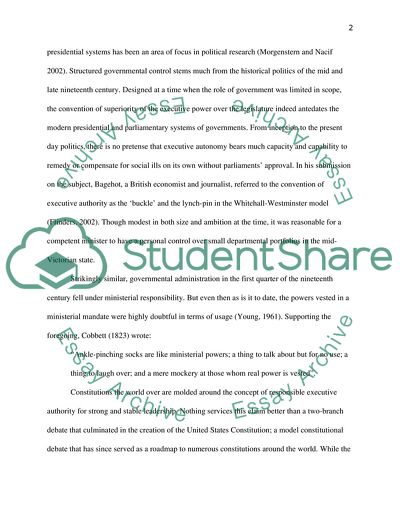Cite this document
(Are Legislatures Always Weaker than Executives Essay Example | Topics and Well Written Essays - 2000 words - 1, n.d.)
Are Legislatures Always Weaker than Executives Essay Example | Topics and Well Written Essays - 2000 words - 1. https://studentshare.org/politics/1787725-are-legislatures-always-weaker-than-executives
Are Legislatures Always Weaker than Executives Essay Example | Topics and Well Written Essays - 2000 words - 1. https://studentshare.org/politics/1787725-are-legislatures-always-weaker-than-executives
(Are Legislatures Always Weaker Than Executives Essay Example | Topics and Well Written Essays - 2000 Words - 1)
Are Legislatures Always Weaker Than Executives Essay Example | Topics and Well Written Essays - 2000 Words - 1. https://studentshare.org/politics/1787725-are-legislatures-always-weaker-than-executives.
Are Legislatures Always Weaker Than Executives Essay Example | Topics and Well Written Essays - 2000 Words - 1. https://studentshare.org/politics/1787725-are-legislatures-always-weaker-than-executives.
“Are Legislatures Always Weaker Than Executives Essay Example | Topics and Well Written Essays - 2000 Words - 1”. https://studentshare.org/politics/1787725-are-legislatures-always-weaker-than-executives.


